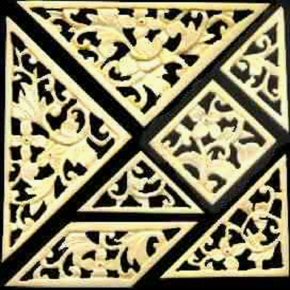Tangram in Mathematics for Lower Secondary School
by Jaroslava Brincková, Miroslav Haviar
Pedagogical Faculty, Matej Bel University, Banská Bystrica, Slovak Republic
and Iveta Dzúriková
8. ročné evanjelické gymnázium, Banská Bystrica, Slovak Republic
INTRODUCTION
Learning is the outcome of an activity and it is
also developed via activity. Among activities which pupils perform quite often
are mathematical games. If such games are performed according to the rules
satisfying certain didactical goals, they are called didactical games in the
educational process. These didactical games include various geometrical puzzles,
among them an old Chinese puzzle called Tangram. From the educational point of
view, Tangram assists in teaching geometry via developing:
-
geometrical knowledge,
-
reasoning,
-
geometrical imagination.
Geometrical imagination is ability to sense:
-
geometrical shapes,
-
their size and position in space,
-
a given shape in different space
positions,
-
changes of shapes in their size, structure,
etc.,
-
a shape in space according to its plane
projection and a word description,
-
a plane representation of a given shape in
space.

- Main Piloting
- by Jaroslava Brincková and Iveta Dzúriková
- Second piloting
- by Brunetto Piochi
Department of Mathematics, University of Florence,
Italy
- Third piloting (at South Bohemian University, České Budějovice,
CZ) and conclusion
- by Jaroslava Brincková and Iveta Dzúriková